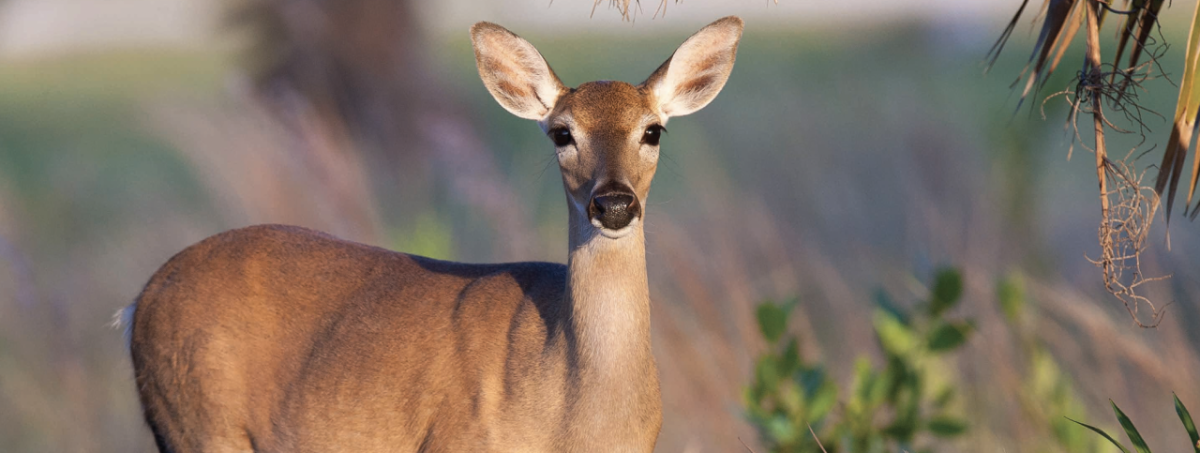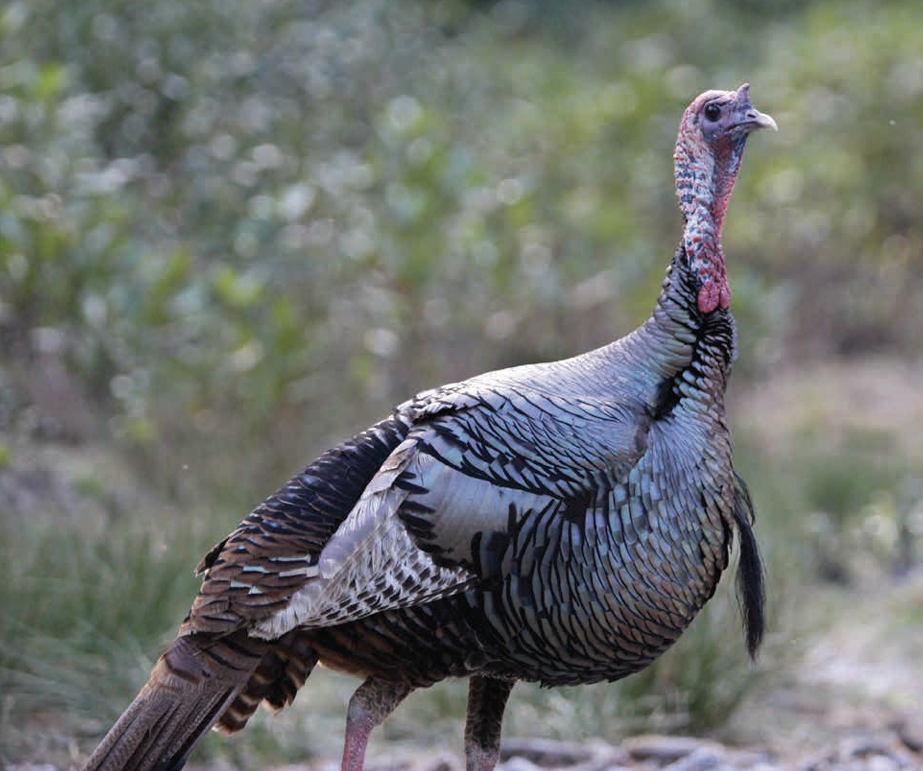Rayonier 2021 Sustainability Report: Biodiversity
Rayonier 2021 Sustainability Report
BIODIVERSITY
Our forests are healthy and diverse ecosystems that we manage with a long-term mindset. We recognize the importance of maintaining biodiversity both for the health of our forests and the broader ecosystems in which they exist.
We are committed to protecting and closely monitoring biodiversity across our timberlands as we manage our working forests. To this end, we follow programs and policies designed to protect the diverse natural capital embedded within our forests. We assess the biodiversity of our lands, minimize disturbances associated with our forestry activities, promote indigenous species, protect T&E species, safeguard ecologically sensitive areas, conduct prompt reforestation, and incorporate biodiversity considerations into our portfolio management activities. The following are more specific examples of the steps we take to proactively conserve and support the biodiversity that exists in and around our timberlands:
Assessing the biodiversity balance of our lands
Through our third-party certification processes, we maintain a formal biodiversity monitoring program. As part of this program, we regularly conduct assessments across our timberlands, which enable us to design and implement best practices to preserve specific habitats and to avoid certain forest management activities during particularly sensitive times. For example, we curtail our forest management activities during the nesting period in identified T&E habitats, including:
- In our U.S. Southern region, from September to May, we buffer active bald eagle nests by as much as 1,000 feet.
- In our U.S. Pacific Northwest region, from April to August, we buffer marbled murrelet nests and curtail activities until two hours after sunrise and then again two hours before sunset.
The detailed analyses we conduct, including classifying cover types by geography, also allow us to manage the quality and distribution of wildlife habitats, which is core to conserving biodiversity across our forests.
Promoting indigenous species and protecting threatened and endangered species
By maintaining a diversity of cover types, leaving buffers along riparian/streamside management zones, and fol lowing age class adjacency restrictions (both voluntary and mandated) for final harvests (referred to as green-up practices), we help ensure indigenous plant and animal species continue to thrive as we conduct our forest management activities. Our species diversity further reflects our deliberate replanting and protection of various indigenous species in concert with green-up practices. Collectively, these efforts help our forests continue to provide abundant nesting habitat, food sources, and travel corridors for wildlife. We take particular care in protecting T&E species on our lands, including refraining from harvest activity as necessary and preserving select natural habitats with buffer areas.
Safeguarding ecologically sensitive areas
Responsible stewardship of forestlands and the biodiversity within them is essential to protecting the ecosystems where we operate. Accordingly, we engage with state and federal agencies, as well as local stakeholders, including adjacent landowners and tribal authorities, to identify and protect ecologically sensitive areas. Specifically, in New Zealand, protection of highly ranked Significant Ecological Areas (SEAs) occurs through stringent best management practices designed to limit operational effects. The highest ranked areas have separate man agement plans and are inspected annually.
Incorporating biodiversity into portfolio management
In addition to taking necessary measures to protect biodiversity within our existing portfolio, we also incor porate a thorough review of ecosystem attributes as part of our due diligence on timberland acquisition opportunities. Specifically, we aim to identify any special sites, including known critical habitats for any T&E species and/or species of concern. If the timberlands being evaluated are ultimately incorporated into our portfolio, we then develop specific guidelines for the new properties to ensure appropriate management moving forward.
THREATENED AND ENDANGERED SPECIES
Of the thousands of plants and animals in Rayonier’s forests, a few species are considered threatened or endangered, which we work actively to protect.
Our foresters and contractors are trained to be aware of and recognize protected T&E species and their habitats. We rely on mapping and database tools, as well as a working knowledge of our land, to determine where specific conservation practices are needed. In addition to our own efforts, we also participate in broader industry and conservation initiatives, such as population studies and surveys.
In the U.S., we rely on state natural heritage programs, NatureServe, regular biodiversity assessments, and the routine field work of our foresters to locate potential occurrences of T&E species. In New Zealand, occur rences of Rare, Threatened, and Endangered Species (RTES) are recorded in our EMS database so that forest management plans can be adapted accordingly. In addition, certain areas designated as either Significant Ecological Areas (SEAs) or High Conservation Value Forests (HCVFs) require special procedures to ensure that they are protected. Through the use of these various tools, we have identified that approximately 51%1,20 of our forests have the potential of being a T&E species habitat.
Importantly, our forest management practices help reduce the risk of adverse impacts to the normal life cycle or habitat of T&E species. Such practices include surveying sites for species occurrences before conducting forest management activities, leaving buffers along riparian and natural habitat areas, or limiting harvest activities during certain times of the year.
Some T&E species are nomadic, which means they move from place to place and do not have fixed boundaries to their habitat. The modifications we make to our forest management practices for these species include hand planting versus machine planting, and/or adapting the timing of activity based on their cycle of movement.
LEARN ABOUT HOW RAYONIER FORESTERS PROTECT THE RED HILLS SALAMANDER IN THE U.S.
CASE STUDY: PROTECTING THE KIWI
In New Zealand, Matariki Forests has been working with the iwi landowners of Ōmataroa Forest to protect the Eastern Brown Kiwi for over a decade.
Recognizing that the kiwi population was very close to disappearing from this area, steps were taken to enable the Eastern Brown Kiwi and other treasured native species to flourish in this forest, with over 60 pairs of kiwi now estimated to be living there. With the help of Matariki Forests’ funding, the work of the Ōmataroa Kiwi Project was presented at a local school, Te kura o Te Teko, providing the children with an inspirational outdoor learning experience.
| U.S. | |
|---|---|
| FEDERAL STATUS* | EXAMPLE SPECIES |
| Endangered | Altamaha Spinymussel, Hairy Rattleweed, Pondberry |
| Threatened | Northern Spotted Owl, Marbled Murrelet, Red Hills Salamander, Indigo Snake, Wood Stork |
| Candidate for Listing | Eastern Gopher Tortoise |
| Delisted due to Recovery |
Bald Eagle |
| N.Z. | |
|---|---|
| STATUS* (Classification per N.Z. Dept. of Conservation) | EXAMPLE SPECIES |
| Critical | Blue Duck, Hochstetter’s Frog, Archey’s Frog, Dwarf Greenhood, Kākābeak, Thick-Leaved Tree Daisy |
| Endangered | Short- and Long-Tailed Bat, Deciduous Tree Daisy, Land Snails, Canterbury and Northland Mudfish, Canterbury Pink Broom, Cypress Hebe |
| Vulnerable | North Island Brown Kiwi, Great Spotted Kiwi, Kaka, New Zealand Falcon, Kōkako, Heart-Leaved Kohuhu |
| Declining | Giant Kōkopu, Fernbird, Bloodwood, Skinks and Geckos |
*Species and listing status are subject to change.



